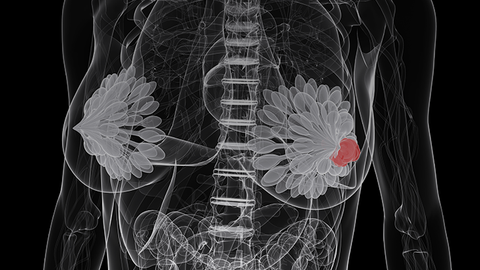Announcer:
Welcome to CME on ReachMD. This episode is part of our MinuteCE curriculum.
Prior to beginning the activity, please be sure to review the faculty and commercial support disclosure statements as well as the learning objectives.
Dr. Tolaney:
My name is Sara Tolaney. I'm a Breast Medical Oncologist at Dana Farber Cancer Institute. And today we're going to be discussing what the evidence is for antibody drug conjugates in hormone receptor-negative, HER2-low metastatic breast cancer.
We're all very familiar with the practice-changing DESTINY-Breast04 study which really looked at trastuzumab deruxtecan in patients with metastatic HER2-low breast cancer. This trial had taken patients who had received one to two prior lines of chemotherapy in the metastatic setting and had HER2-low disease and randomized them to get T-DXd or treatment of physician’s choice chemotherapy. The study was really designed to assess progression-free survival within patients with hormone receptor-positive disease, which comprised about 480 patients in this trial, but did have an exploratory subset that focused on hormone receptor-negative patients, which in fact, ended up just being 58 patients. The study did demonstrate that in the overall population, T-DXd was associated with an improvement in both PFS and OS, as well as within the hormone receptor-positive patients. And when you specifically look at those hormone receptor-negative patients, again, remember that was 58 of the patients in this trial, you can see that there was a remarkable improvement in progression-free survival going from 2.9 to 8.5 months. So a hazard ratio of 0.46, and similarly a very impressive improvement in overall survival going from 8.3 months to 18.2 months.
Certainly, we do have to keep in mind toxicities, with T-DXd, with one particular toxicity of interest being interstitial lung disease, which was experienced in about 12% of patients. There, unfortunately, were 3 patients in the trial who did die from their interstitial lung disease, but most of the ILD is in fact, low grade, but very important to be aware of this toxicity and monitor your patients for it.
One of the challenges that does come up when thinking about T-DXd for your patients is figuring out which patients to give T-DXd to, and that is because we struggle sometimes with assessing who truly has HER2-low disease. And what tumor tissue do you use to assess that? Because HER2-low status can change over time. And so what is the tissue sample you should be using to determine if they should get it.
And we saw an analysis from DESTINY-Breast04 suggesting it really didn't matter what the tissue source was, whether it was from the original primary cancer, or if it was from an immediate biopsy prior to starting therapy, the benefits that you're seeing from T-DXd were similar, irrespective of tissue source. So in my mind, it really means that I make a determination based on any sample over the treatment course that has to have at least one HER2-low reading, even if the most immediate biopsy sample is not HER2-low, I still think about T-DXd in this case.
There is some controversy though about whether or not someone even needs to have HER2-low disease at all. And could someone have HER2-0 disease and benefit? And this stems from the DAISY trial which did include a small cohort of patients who had HER2-0 disease in Cohort 3, where you can see that the response rate is about 30%. Again, these are small numbers and do need further validation, but I think is quite intriguing. And I think more work is needed to better understand what level of HER2 expression is needed.
We do have other ADCs outside of T-DXd, including sacituzumab. And you can see that sacituzumab has similar efficacies in HER2-low and HER2-0 disease, really suggesting it doesn't matter, you know if they're HER2-0 or HER2-low, that sacituzumab works irrespectively of that.
So overall I think for our HER2-low patients who are triple-negative, I do think about T-DXd or sacituzumab for these patients. Generally, I give sacituzumab first, prior to T-DXd because the data came from a large phase 3 study, whereas with D-B04, it was only a small subset of 58 patients, but I do use the agents sequentially in this setting so that patients can get exposed to both ADCs over time.
Thank you so much.
Announcer:
You have been listening to CME on ReachMD. This activity is jointly provided by Global Learning Collaborative (GLC) and TotalCME, LLC. and is part of our MinuteCE curriculum.
To receive your free CME credit, or to download this activity, go to ReachMD.com/CME. Thank you for listening.


 In support of improving patient care, this activity has been planned and implemented by Global Learning Collaborative (GLC) and Total CME, LLC. GLC is jointly accredited by the American Council for Continuing Medical Education (ACCME), the Accreditation Council for Pharmacy Education (ACPE), and the American Nurses Credentialing Center (ANCC) to provide continuing education for the healthcare team.
In support of improving patient care, this activity has been planned and implemented by Global Learning Collaborative (GLC) and Total CME, LLC. GLC is jointly accredited by the American Council for Continuing Medical Education (ACCME), the Accreditation Council for Pharmacy Education (ACPE), and the American Nurses Credentialing Center (ANCC) to provide continuing education for the healthcare team.

Facebook Comments